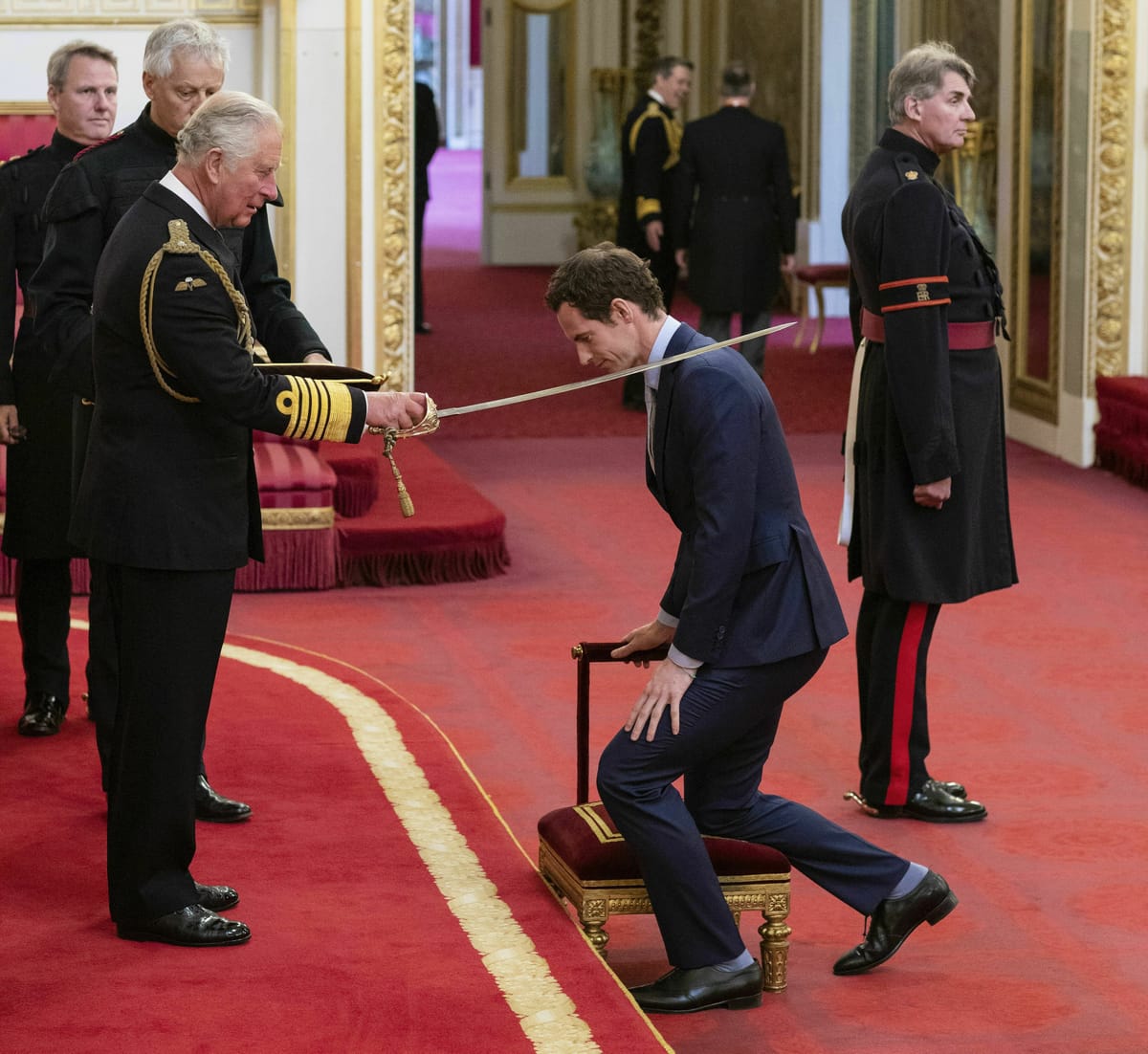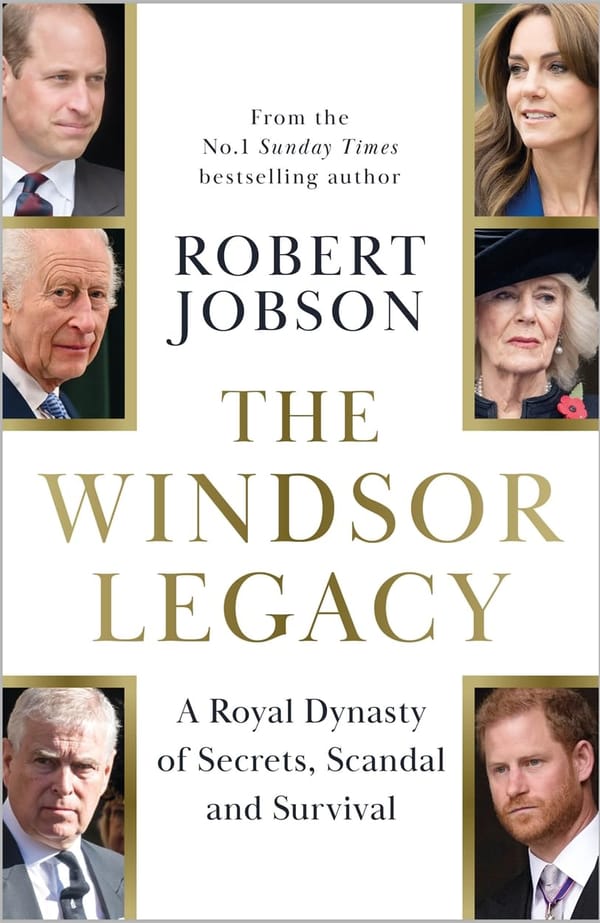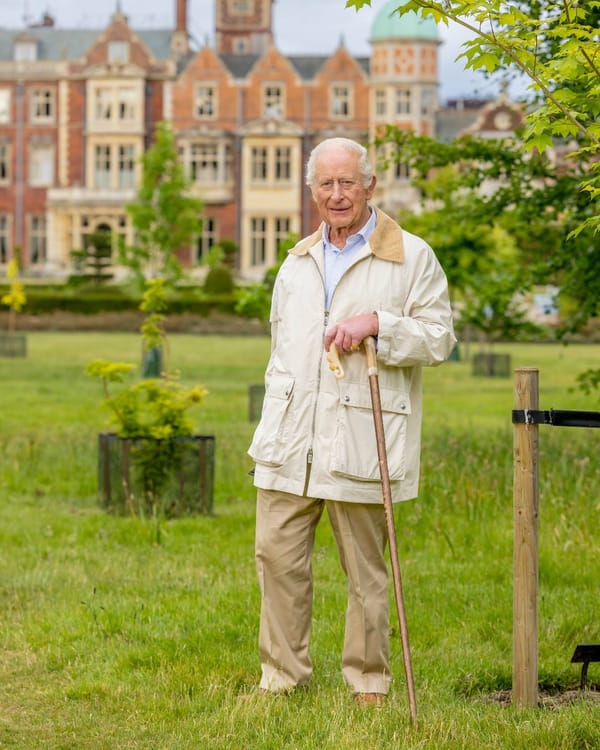Royal 101: British Royal Investitures - How People Receive Their Honours

Every year, thousands of ordinary and extraordinary Britons receive recognition for their service, achievements, and contributions to society through the UK's honours system. But how exactly does someone go from being nominated to standing before royalty to receive their award? The formal ceremony where honours are presented is called an investiture, and it's a tradition steeped in centuries of royal protocol.
What Is an Investiture?
An investiture is the formal ceremony where the monarch (or their representative) personally presents honours and awards to recipients. The word comes from the Latin "investire," meaning "to clothe" or "to install," reflecting the historical practice of literally clothing someone with the symbols of their new rank or office.
These ceremonies transform what could be a simple administrative process into a deeply personal moment of recognition. Recipients don't just receive a medal in the post—they experience a face-to-face encounter with royalty in one of Britain's most prestigious settings.
The Historical Roots of Royal Honours
The tradition of monarchs recognizing service and achievement stretches back over a thousand years, evolving from medieval practices of rewarding knights and nobles to today's system that honors citizens from all walks of life.
Medieval Origins
The earliest form of royal recognition emerged in medieval times when kings would grant land, titles, and privileges to knights who served them in battle. The ceremony of knighthood, where a warrior knelt before his sovereign to be "dubbed" with a sword, established the fundamental template for modern investitures. These early ceremonies were deeply religious affairs, often conducted in churches and involving overnight vigils and sacred oaths.
The Order of the Garter
England's oldest order of chivalry, the Order of the Garter, was established by Edward III around 1348. Legend suggests it was inspired when the king retrieved a lady's dropped garter at a court ball, declaring "Honi soit qui mal y pense" (shame on him who thinks evil of it)—still the order's motto today. This marked the beginning of formal orders of chivalry that recognized not just military prowess but also service to the crown.
Evolution Through the Centuries
The system gradually expanded beyond the nobility. The Order of the Bath, established in 1725, began recognizing military and civil service. The Victorian era saw the most significant expansion when Queen Victoria, inspired by the Crimean War, created new awards to recognize bravery and service across all social classes.
The Modern System Emerges
The Order of the British Empire, created by George V in 1917, revolutionized the honours system by specifically recognizing service by ordinary citizens. This marked the true beginning of the modern system where teachers, nurses, volunteers, and community workers could receive the same ceremonial recognition as generals and ambassadors.
The twice-yearly honours lists—New Year and Birthday Honours—were formalized in the 20th century, creating the regular rhythm of recognition we know today. Significantly, recommendations began coming from the public rather than solely from government officials, democratizing the process while maintaining its royal character.
The Honours System: From Nomination to Ceremony
Before anyone can attend an investiture, they must first be selected through the UK's honours system. This process begins with nominations from the public, government departments, or other organizations. Twice a year—at New Year and on the monarch's official birthday in June—the honours lists are published, revealing who will be recognized.
Honours range from knighthoods and damehoods (the highest recognition for civilians) down to British Empire Medals for local community service. Other common awards include Companions of the Order of the Bath (CB), Officers of the Order of the British Empire (OBE), Members of the Order of the British Empire (MBE), and various military decorations.
Once someone's honour is announced, they receive an official invitation to attend an investiture ceremony, usually held several months later.
Where Investitures Take Place
The majority of investitures occur at Buckingham Palace in the ornate Ballroom, which can accommodate around 150 recipients and their guests. The room, with its throne canopy and red carpet, provides a suitably grand setting for the occasion.
However, investitures also take place at other royal residences:
- Windsor Castle hosts ceremonies in St. George's Hall
- Palace of Holyroodhouse in Edinburgh serves Scottish recipients
- Hillsborough Castle in Northern Ireland occasionally hosts ceremonies
For those unable to travel to these locations due to illness or infirmity, the monarch may occasionally conduct investitures at hospitals or other venues—a touching personal gesture that underscores the human side of royal duty.
The Ceremony Itself
Investiture ceremonies follow a precise format that has evolved over decades but maintains its essential dignity and personal touch.
Before the Ceremony
Recipients arrive at the palace about an hour before the ceremony begins. They're briefed by palace staff on exactly what will happen: how to approach the monarch, what will be said, and the proper protocol for receiving their honour.
Each recipient is allowed to bring up to three guests, who are seated in the Ballroom before the ceremony begins. Meanwhile, recipients wait in an adjoining room, often chatting nervously with fellow honorees from all walks of life—from world-famous celebrities to local volunteers.
The Processional
The ceremony begins when the monarch enters the Ballroom, usually accompanied by the household cavalry's trumpeters and sometimes by other members of the royal family. The monarch takes their position beneath the throne canopy, while recipients are called forward one by one.
The Personal Moment
Each recipient approaches the monarch individually—this is where the magic happens. The presentation isn't rushed; there's genuine conversation. The monarch typically asks about the work or service that led to the honour, often demonstrating remarkable knowledge about each person's achievements.
For knighthoods and damehoods, the recipient kneels on an investiture stool while the monarch uses a sword to lightly touch each shoulder—the famous "dubbing" ceremony. For other honours, recipients remain standing while the medal or insignia is pinned to their clothing or hung around their neck.
The Exit
After receiving their honour and chatting briefly with the monarch, recipients step backward (never turning their back on the sovereign) and exit through a different door. They're immediately congratulated by palace staff and often pose for official photographs.
Who Conducts Investitures?
While the monarch personally conducts many investitures, other senior royals also perform this duty. King Charles III, as monarch, now conducts the majority of ceremonies, but other working royals regularly step in:
- The Princess Royal (Princess Anne) is particularly active in conducting investitures
- The Prince of Wales regularly represents the King
- The Duke of Cambridge has increasingly taken on this role
Each royal brings their own style to the ceremony, but all maintain the essential dignity and personal attention that makes investitures so special.
Notable Investiture Moments
Over the years, investitures have produced countless memorable moments:
- Sir Paul McCartney received his knighthood in 1997, with the Queen reportedly asking if he still played music
- Dame Judi Dench was made a dame in 1988, continuing a long tradition of theatrical honours
- Captain Tom Moore received his knighthood in 2020 in a special ceremony at Windsor Castle during the pandemic
- David Beckham received his OBE in 2003, bringing considerable media attention to the ceremony
The Protocol and Dress Code
Investitures follow strict protocol:
For Recipients:
- Men: Morning dress, lounge suits, or military uniform
- Women: Day dress with hats (mandatory), or military uniform
- Colors: Generally subdued; bright colors are discouraged
- Accessories: Minimal jewelry; handbags must be small
For Guests:
- Smart formal wear is required
- Hats are encouraged for women but not mandatory
- Mobile phones must be switched off
- Photography is prohibited during the ceremony
Modern Adaptations
While steeped in tradition, investitures have adapted to modern times:
- Accessibility: Special arrangements are made for recipients with disabilities
- Cultural sensitivity: The ceremony respects different religious and cultural backgrounds
- Media access: Selected ceremonies are filmed for television, though most remain private
- Pandemic adaptations: During COVID-19, ceremonies were modified with social distancing and reduced guest numbers
The Impact of Receiving an Honour
For most recipients, the investiture represents the culmination of years or even decades of service. The personal interaction with royalty—however brief—often proves deeply meaningful. Many describe feeling genuinely seen and appreciated for their contributions, whether they've spent decades in public service or simply helped their local community.
The ceremony also serves a broader purpose: it demonstrates the monarchy's connection to all levels of society and its recognition that service and achievement come in many forms.
Beyond the Palace Gates
After the ceremony, recipients typically celebrate with family and friends, often dining at nearby restaurants or hotels. Many report that the personal conversation with the monarch—learning that royalty knew specific details about their work—proves as memorable as receiving the honour itself.
The investiture system represents something uniquely British: the combination of ancient tradition with democratic recognition, where a monarch personally thanks citizens for their service to society. It's a ceremony that bridges the gap between the constitutional role of the monarchy and its human, personal dimension.
Whether someone receives recognition for lifetime achievement or community service, the investiture ceremony ensures their moment of recognition is both deeply personal and part of a tradition stretching back centuries—a perfect example of how British institutions blend continuity with contemporary relevance.




